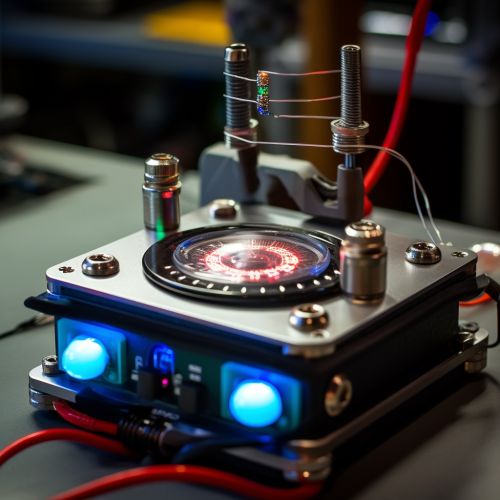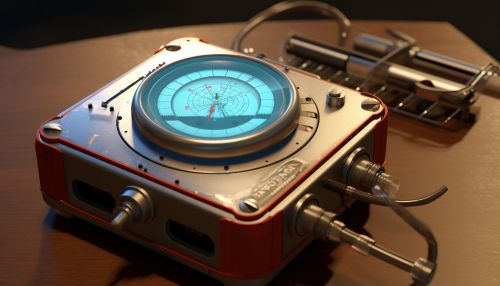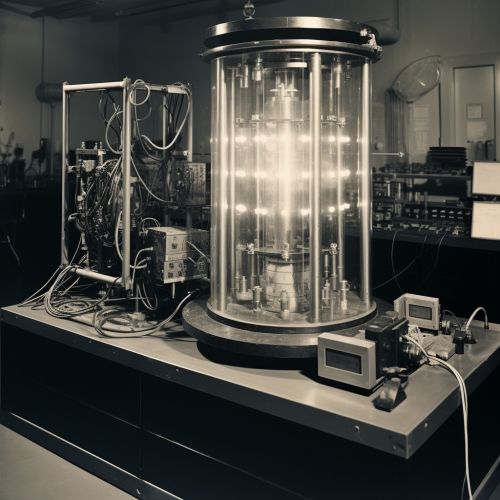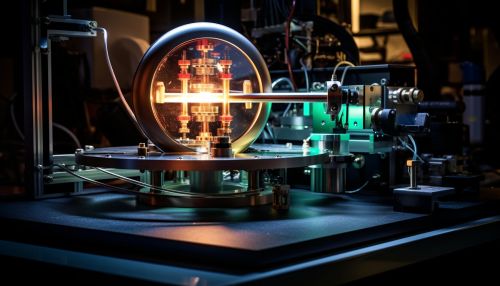Quantum Sensing
Introduction
Quantum sensing is a branch of quantum physics that exploits the quantum properties of particles to create highly sensitive and accurate sensors. These sensors can measure physical quantities such as temperature, pressure, magnetic fields, gravity, and more with unprecedented precision. The field is rapidly evolving, with new discoveries and applications emerging regularly.


Quantum Mechanics and Sensing
Quantum sensing is based on the principles of quantum mechanics, a branch of physics that describes the behavior of particles at the smallest scales. Quantum mechanics introduces several phenomena that do not exist in classical physics, such as superposition and entanglement. These phenomena are the basis for quantum sensing.
Superposition
Superposition is a fundamental concept in quantum mechanics. It states that a quantum system can exist in multiple states at once, with each state corresponding to a different possible outcome of a measurement. This is in stark contrast to classical systems, which can only exist in one state at a time. In quantum sensing, superposition allows for the simultaneous measurement of multiple parameters, greatly enhancing the sensitivity and accuracy of the sensors.


Entanglement
Entanglement is another quantum phenomenon that plays a crucial role in quantum sensing. When two particles are entangled, the state of one particle is instantaneously connected to the state of the other, no matter the distance between them. This correlation can be used to improve the precision of measurements, as any changes in one particle are immediately reflected in the other.


Quantum Sensors
Quantum sensors are devices that use quantum phenomena to measure physical quantities. They can be divided into several types, depending on the quantity they measure and the quantum system they use.
Quantum Magnetometers
Quantum magnetometers use the principles of quantum mechanics to measure magnetic fields. They are based on the phenomenon of quantum spin, a property of particles that gives them a magnetic moment. By measuring changes in the spin state of a quantum system, quantum magnetometers can detect even the smallest variations in a magnetic field.


Quantum Gravimeters
Quantum gravimeters measure gravity by observing the behavior of quantum particles in a gravitational field. They use the principle of quantum interference, a phenomenon that occurs when a quantum system evolves along multiple paths simultaneously. By comparing the interference patterns of particles in different gravitational potentials, quantum gravimeters can measure the strength of gravity with high precision.


Applications of Quantum Sensing
Quantum sensing has a wide range of applications, from fundamental physics research to practical uses in industry and technology.
Fundamental Physics
In fundamental physics, quantum sensors are used to test the predictions of quantum mechanics and to search for new physical phenomena. For example, quantum gravimeters can be used to test the equivalence principle, a fundamental postulate of general relativity, by comparing the acceleration of quantum particles in a gravitational field.
Industry and Technology
In industry and technology, quantum sensors can provide highly accurate measurements that can improve the performance of various systems. For example, quantum magnetometers can be used in geophysics for mineral exploration, in medicine for magnetic resonance imaging (MRI), and in navigation systems for precise positioning.


Future Perspectives
The field of quantum sensing is still in its early stages, but the potential applications are vast. As our understanding of quantum mechanics continues to deepen, and as technology advances, we can expect to see more and more applications of quantum sensing in various fields.
